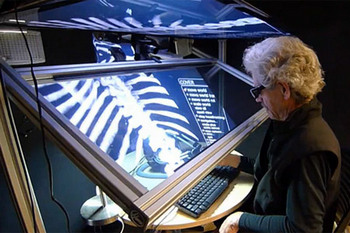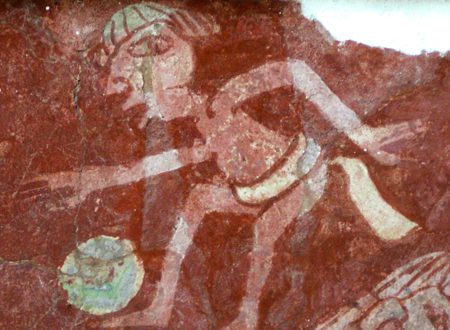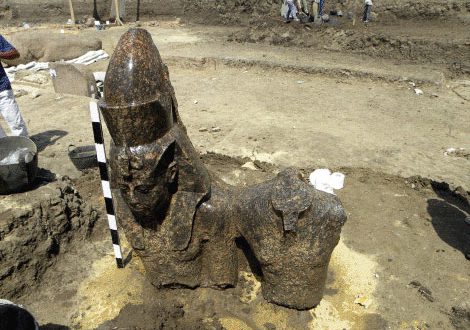 In philosophy there is a long-running discussion on whether or not the dead can be wronged. Our human or primate intuition seems to be that the dead can indeed be harmed. The philosopher Aristotle pointed out we’d better wait to call a person fortunate until some decades after his death: For it seems to some extent good and evil really exist for a dead man, just as they may exist for a man who lives without being conscious of them, for example, honours and disgraces, and generally the successes and failures of his children and descendents. Nowadays, it seems the dead need to worry more about inquisitive scholars than about posthumous slander or underachieving offspring.
In philosophy there is a long-running discussion on whether or not the dead can be wronged. Our human or primate intuition seems to be that the dead can indeed be harmed. The philosopher Aristotle pointed out we’d better wait to call a person fortunate until some decades after his death: For it seems to some extent good and evil really exist for a dead man, just as they may exist for a man who lives without being conscious of them, for example, honours and disgraces, and generally the successes and failures of his children and descendents. Nowadays, it seems the dead need to worry more about inquisitive scholars than about posthumous slander or underachieving offspring.
Human remains are stored in universities and museums all over the world. Recent examples of genetic testing on ancient human remains are the research projects on Tutankhamun and his family, the Amesbury Archer, decapitated Viking skeletonsand even 40,000 year-old Neanderthal bones.
Only small amounts of DNA are needed to test for disease or confirm identity, even for the ‘ancient dead’. But this is still classed as ‘destructive’ research compared to the non-intrusive technique of scanning, which is often applied to mummies.
For DNA research you do need to remove a tiny part of the remains in order for it to be processed. A total of 400 milligrams of bone powder was used for the analysis of the Neanderthal genome. In the case of King Tut and his family, extraction of DNA from the mummies’ bones allowed researchers to reveal identities of until now unknown mummies and reveal the probable cause of death of the young king.
Tooth enamel from Dorset’s 51 decapitated Viking skeletons taught us that these were not locals, but rather came from somewhere (even more) cold, and that one of the executed warriors even originated from north of the Arctic circle.
That such tests can be performed on historical persons raised enough questions for Malin Masterton to write a doctoral thesis about the ethical issues of such techniques. On May 29th, she will defend her PhD thesis Duties to Past Persons: Moral Standing and Posthumous Interests of Old Human Remains at the Uppsala University in Sweden. Masterton’s thesis covers the moral status of past people and our duties towards the dead.
At least in Sweden, the living are protected by laws on genetic integrity. We have no legal obligations to King Tut or other historical persons, but there is perhaps still integrity worth protecting, says Malin Masterton at the Centre for Research Ethics & Bioethics (CRB).
In her thesis, Malin Masterton discusses ethical guidelines for the handling of human remains and makes suggestions for revisions. The basis for these revisions is that the dead also have an identity in the form of a narrative. I propose that the dead should be given moral status based on our respect for human life, says Malin Masterton.
Whose integrity and interest is it when the person is dead? Malin Masterton argues that parts of a persons identity remain after death. One way of looking at identity is as a narrative the story of ones life that both stands alone and is interwoven with other peoples stories. Seen like this, the dead too have a name and a reputation worth protecting. So no more calling Helen of Troy a whore, Nero a nitwit or Belzoni a looting circus artist?
If the dead, to some degree like the living, have integrity and reputation, they also have moral status and we can wrong them. According to Malin Masterton, we have three duties to the dead:
- We have a duty of truthfulness in our description of a persons reputation.
- We have a duty to respect the personal integrity of the dead in research contexts.
- We have a duty to admit wrongs we have committed against the dead, like illegal archaeological digs.(or decapitating a royal mummy because it is the only way to get that pretty, shiny death mask off?)
Masterton’s thesis is particularly relevant for those who handle remains of known historical persons, but could also influence the debate on all the anonymous human remains stored in universities, institutions and museums around the world. Until today, it is mainly indigenous peoples or in Britain, furious druids – who have reacted to the handling of their ancestors remains and make request for repatriation or reburial of old human remains. Masterton believes these demands on repatriation and reburial need to be considered, both by archaeologists and museums.
Perhaps we need to consider how we deal with human remains of indigenous people, like the Sami skeletons that are stored in Swedish museums, as well as with human remains where there are no living representatives who can argue their case, says Malin Masterton.
Recent cases of repatriation of human remains from museums are Maori remains returning to New Zealand from Sweden, part of a large-scale repatriation programme under way at New Zealand’s National Museum. The University of Oxford returned its Aboriginal remains to Australia and Egypt got… Akhenaton’s toe back.
Malin Masterton’s thesis is in English and can be read in full on the Uppsala University website by following this link. In Britain, there is the 2005 ‘Guidance for the Care of Human Remains in Museums’ whichcovers the legal and ethical frame work, curationand preservation and how to handle claims for thereturn ofhuman museums, available from the Department for Culture, Media and Sports.




